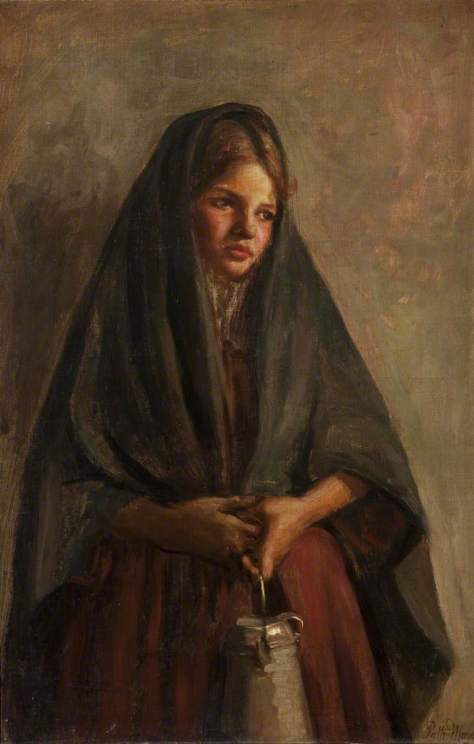The 8th of March is International Women’s Day, so to celebrate we will be telling you the story of two remarkable Preston women. One was an artist and suffragette, the other was a child mill worker.
Patti Mayor was born in 1872 in Preston. She studied at Slade School of Fine Art in London. This was one of the most important art schools in Britain at the time.

Patti returned to Preston after her studies and is believed to have lived a very cultured lifestyle. During this time she formed a close relationship with a man called Joseph Garstang. He became infamous during World War I for his political views and for being a conscientious objector, which meant he refused participate and fight in the war. Look out for a post about him another day!
Patti and Joseph both took a strong interest in politics, and Patti was especially drawn to suffragism. Women were not able to vote during this period, and Patti, among many others, wanted this to change.
Following art school, Patti worked as an artist and painted numerous portraits of local women. These paintings were unusual for the time as they focused on young women at work and in their normal lives. Women until then had often only been painted in a distant way, and commonly belonged to the upper classes. The lives of working girls was often left unnoticed.
In 1906 Patti painted her famous painting, The Half-Timer. It depicted a twelve year old girl called Annie Hill, who had just started working in the Horrockses Stanley Street Yard Works in Preston. The title refers to the fact that children split their time between working part-time in the mill and receiving an education. Annie would go to work for half the day and then to school for a few hours. Her work in the mill would have been extremely hard and in later life left her partly deaf.

In 1908, Patti removed the picture from its frame and took it to the ‘Women’s Sunday March’ march in London organised by the Women’s Social and Political Union. This organisation demanded the vote for women and often resorted to direct action. She mounted the picture of Annie on a stick and carried it around during the march. It also carried the slogan ‘Preston Lasses Mun Hev the Vote’.
But why did Patti choose to do this? The portrait of Annie was taken as evidence to prove that young girls were still working in the Northern mill industry. In many parts of the country, like the South of England people did not believe this to be true!
During this period, men were given the vote based on their contribution to the economy by working, the same could not be said for women. If it was shown that women worked just as hard to contribute to the economy then it supported their demand for the vote.
The campaign for the vote was halted by World War I and all efforts were focused on the war effort. By 1918, some women were partially given the right to vote and the universal vote for women was not introduced until 1928 in Britain.
Patti died in 1962. She left many unnamed portraits behind. A lot of her works can be found in public art collections. If you want to explore her work further, then head to the Harris Museum & Art Gallery in Preston, the Grundy Art Gallery in Blackpool or the Walker Art Gallery in Liverpool.
Looking for more information on inspiring Prestonian women? Check out our earlier blog posts and this brilliant one from the Harris Museum & Art Gallery, where Patti also makes an appearance!
Picture credits
Patti Mayor, Self Portrait, Grundy Art Gallery, image via https://artuk.org/discover/artworks/self-portrait-150680/search/actor:mayor-patti-18721962/page/1/view_as/grid
Patti Mayor, The Half-Timer, 1906, Harris Museum & Art Gallery, image via https://artuk.org/discover/artworks/the-half-timer-152266/search/actor:mayor-patti-18721962/page/2
